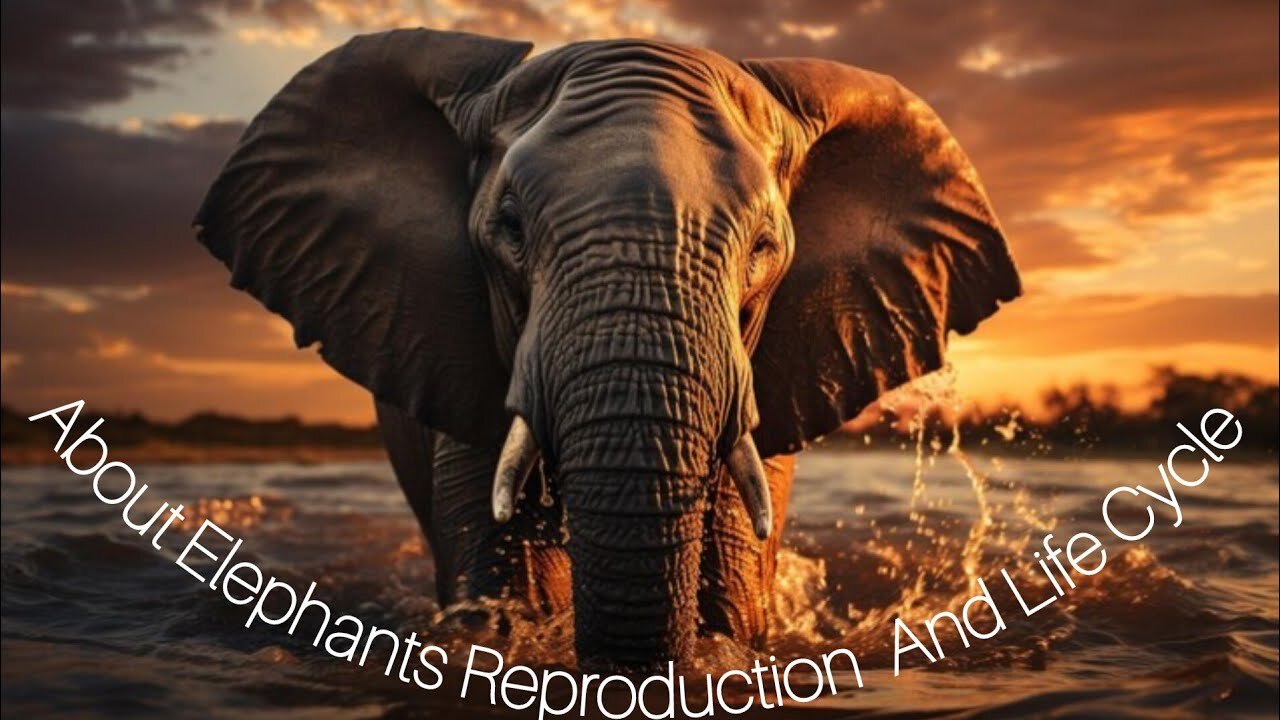Premium Only Content

About Elephants Reproduction And Life Cycle, The Trunk, Migration And Importance To Humans
Elephants are remarkable creatures known for their complex social structures, intelligence, and unique adaptations. In terms of reproduction and life cycle, elephants have a lengthy gestation period of about 22 months, one of the longest among mammals. They typically give birth to a single calf, which is nurtured and protected by the herd. Calves are dependent on their mothers for several years, learning essential survival skills such as feeding and social behaviors.
One of the most distinctive features of elephants is their trunk, which is a fusion of their nose and upper lip. This versatile appendage serves multiple functions, from grasping objects to drawing water and dusting their bodies. It contains an impressive 150,000 muscle units, enabling precise movements and delicate manipulations.
Migration patterns among elephants vary by species and region. African elephants, for instance, may undertake seasonal migrations in search of food and water, covering extensive distances. These migrations are crucial for maintaining healthy ecosystems, as elephants play a vital role in shaping landscapes and dispersing seeds.
Elephants hold significant importance to humans in various cultural, ecological, and economic contexts. They are revered in many cultures as symbols of wisdom, strength, and familial bonds. Ecologically, elephants contribute to biodiversity by creating habitats through their feeding and browsing activities. Economically, they support tourism industries in many regions, attracting visitors eager to witness these majestic animals in their natural habitats.
#ElephantLifeCycle #ElephantTrunk #ElephantMigration #ImportanceOfElephants #ConservationEfforts
-
 55:44
55:44
Game On!
16 hours agoCJ Stroud's MAKE or BREAK Season with the Texans?
5.12K1 -
 47:58
47:58
BlaireWhite
18 hours agoEpstein Survivor Interview: Exposing Everyone and Everything
10.3K15 -
 21:56
21:56
Producer Michael
19 hours agoI JUST BOUGHT $1,000,000 OF NEW CARS!
10.6K3 -
 2:56
2:56
Blackstone Griddles
13 hours agoHow to Clean your Blackstone Griddle with Bruce Mitchell
14K5 -
 8:07
8:07
Freedom Frontline
15 hours agoDan Goldman Just Got EXPOSED With ONE Video He Wasn’t Ready For
10.4K4 -
 LIVE
LIVE
BEK TV
23 hours agoTrent Loos in the Morning - 8/06/2025
264 watching -
 8:09
8:09
The Shannon Joy Show
14 hours ago🔥There Is No Golden Age: Trump’s Renter Society Is the Scam🔥
10.9K24 -
 11:23
11:23
True Crime | Unsolved Cases | Mysterious Stories
20 hours agoFound Inside a Gym Mat – 5 Mysterious Unsolved Cases (with Video Footage)
16.2K3 -
 13:31
13:31
GoldenWebb
19 hours agoSuper Safety Meltdown
16.4K1 -
 8:47
8:47
The Art of Improvement
20 hours agoHow to Change Your Bad Habits
12.2K